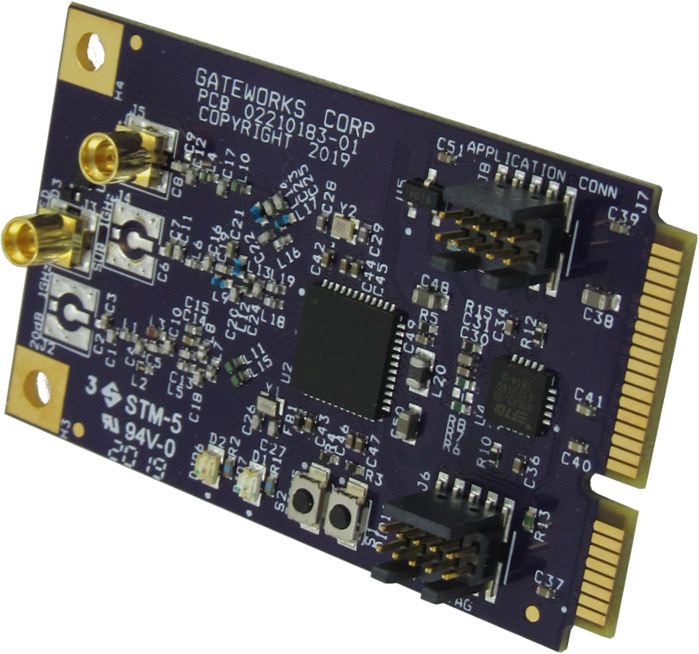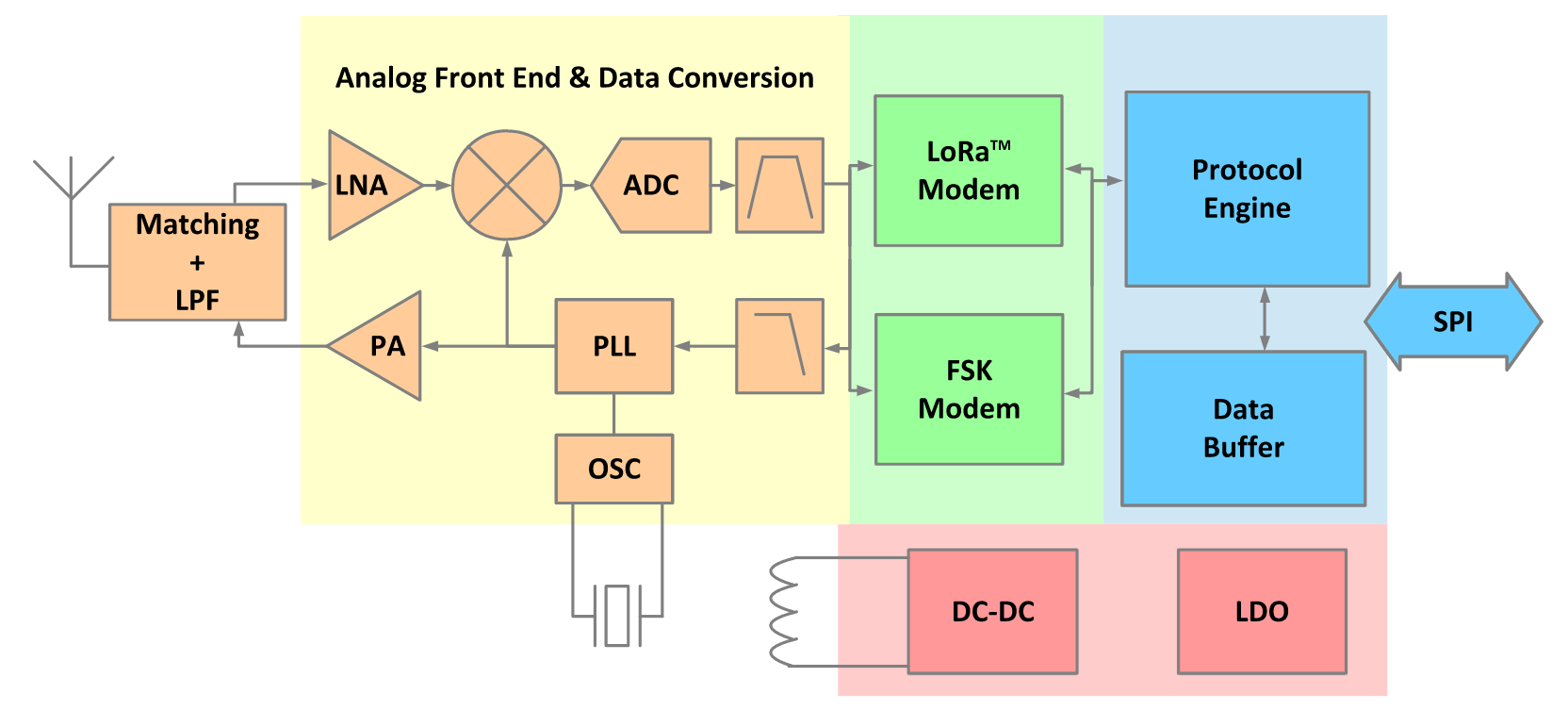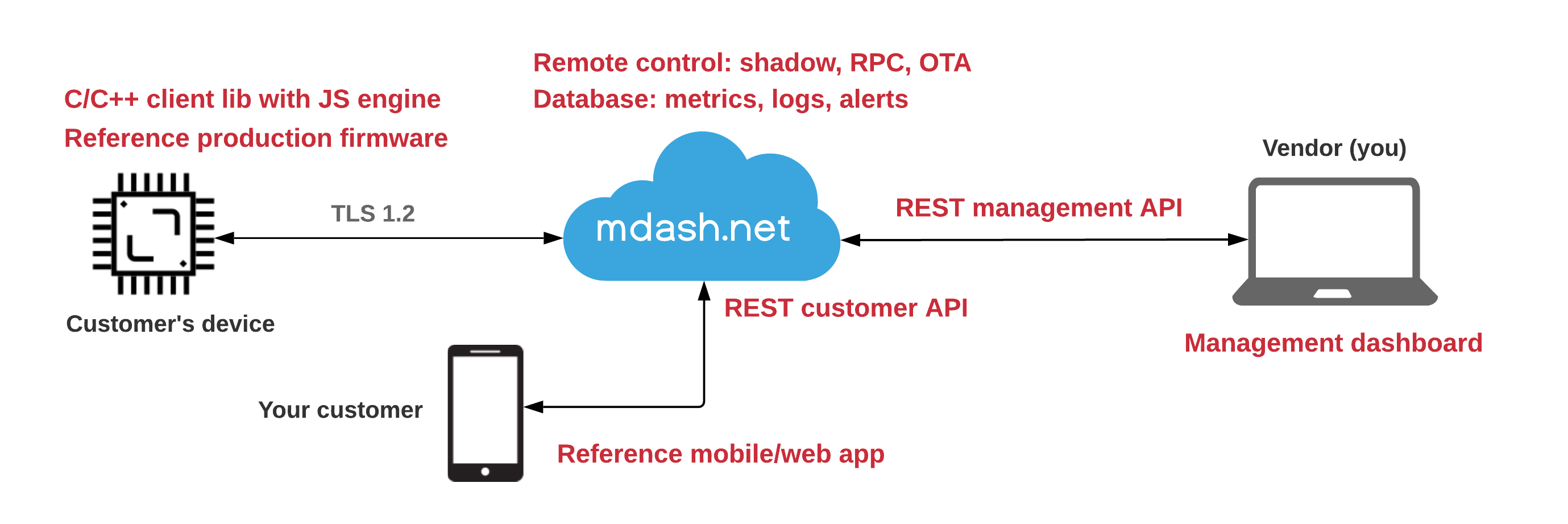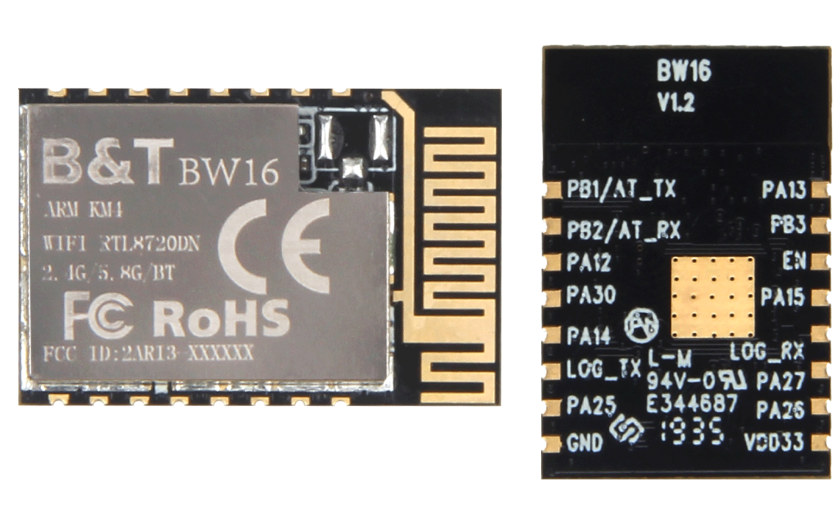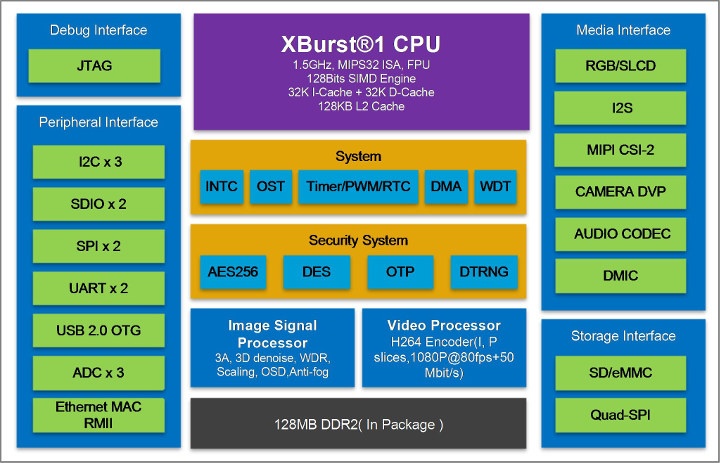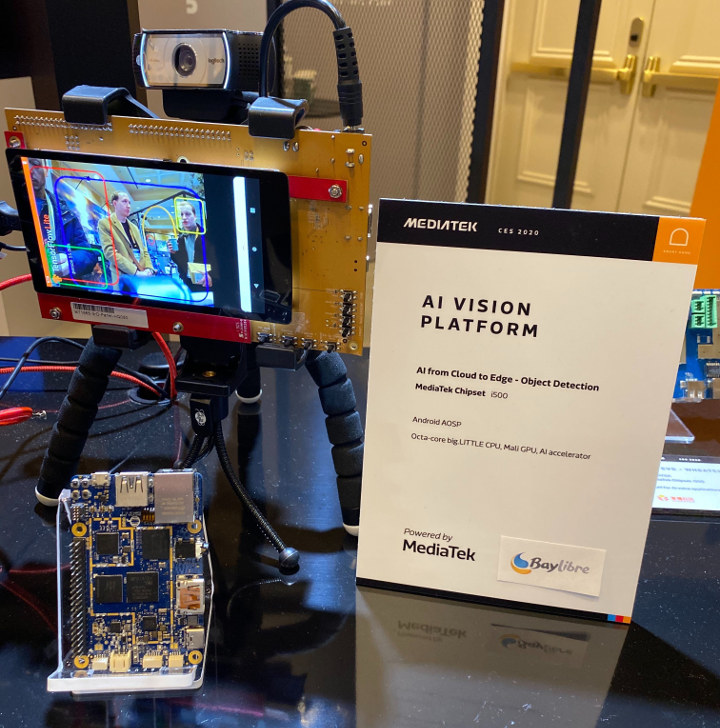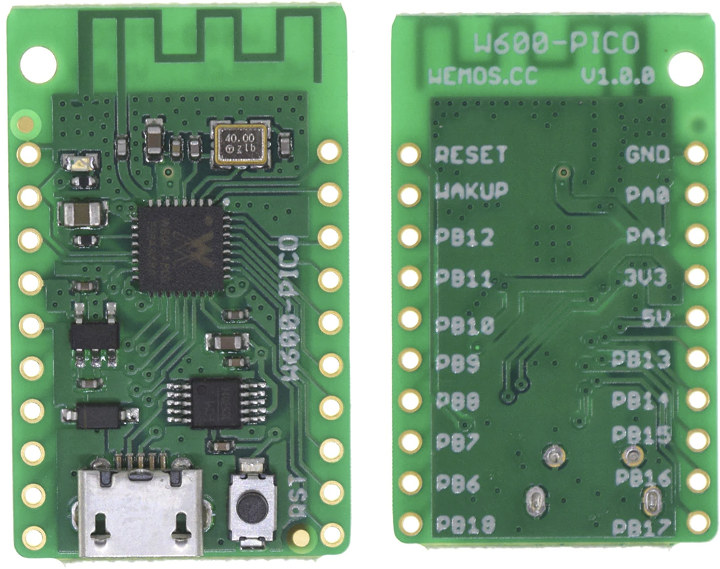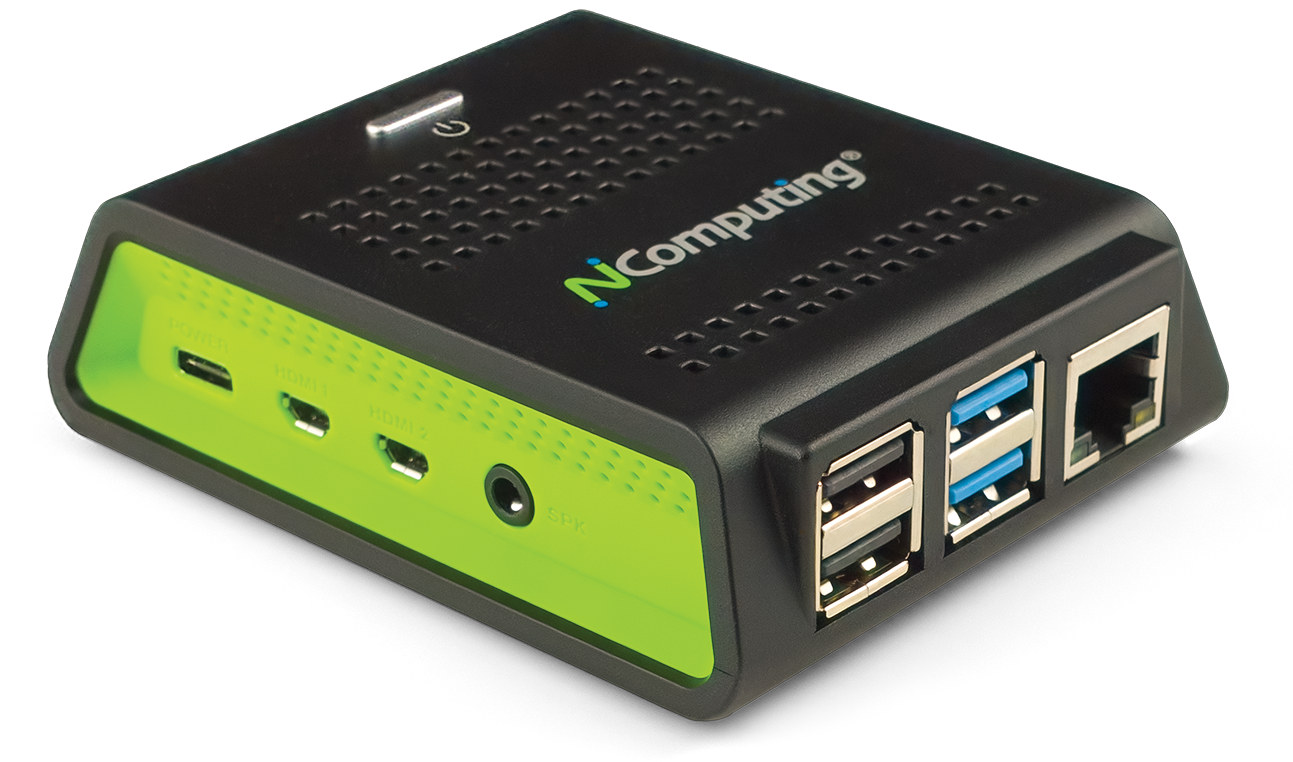Gateworks GW16122 is a mini PCIe card that adds sub-GHz and 2.4GHz radio to the company line of Ventana and Newport Linux SBC’s, and is meant for industrial IoT (IIoT) applications as an alternative to LoRa and Sigfox. The second generation of the card is based on Texas instruments CC1352P dual-band wireless SoC that supports Wireless M-Bus, IEEE 802.15.4g, 6LoWPAN, KNX RF, and Wi-SUN at sub-GHz frequencies (EU: 868MHz, US: 915MHz), and Bluetooth 5 Low Energy, Thread, and Zigbee at 2.4 GHz. Gateworks GW16122 key features and specifications: MCU – Texas Instruments CC1352P Arm Cortex-M4F MCU @ 48 MHz with 352KB flash, 80KB SRAM, dual-band wireless radio transmitter/receiver Radios Sub-1 GHz Radio 868MHz EU, 915 MHz US (default) Low Power, sensor nodes can run on a coin-cell battery -121dBm Receive Sensitivity for long-range communication 20dBm Output Power Texas Instruments TI-RTOS and TI-15.4 Stack M-Bus, IEEE802.15.4g, Contiki 6LoWPAN, Wi-SUN, KNX RF […]
Semtech launches LLCC68 LoRa Transceiver for Smart Home Applications
Semtech, a leader in LoRa and RF technology, is continuing its support for the LoRa ecosystem with the launch of a LoRa Smart Home transceiver called the LLCC68. The device is designed for deploying existing and new LPWAN technologies for smart homes, community, and consumer applications. The LoRa Smart Home (LLCC68) is like every other sub-GHz LoRa RF transceiver but mostly targeted to indoor and medium outdoor applications. The device is hardware compatible with the SX126x series like the: SX1261, SX1262, and SX1268. The LLCC68 transceiver is optimized for battery-powered applications with multi-year life expectancy. It consumes as little as 600nA of sleep current, 4.6 mA of active receive current and can transmit at +22 dBm thanks to highly efficient integrated power amplifiers. According to SemTech, The new LoRa® Smart Home device offers a unique opportunity to accelerate the consumer adoption of smart home connected solutions. As an end-to-end solution, […]
VCON Adds IoT Cloud Connectivity to Existing STM32 & AVR Products
You can have a product based on a microcontroller and operating fully offline, for example, a washing machine. But you’d now like to update your appliance to connect to the cloud so it can upload data to the cloud, and help your customer access it. This is a non-trivial update as it requires you to add a communication module be it WiFi or Ethernet, or a new microcontroller that would require you to update your firmware to support networking and other new features. You’d also need to develop your own cloud platform, and potentially a smartphone app. Cesanta VCON platform aims to simplify the upgrade with firmware that can be flashed to ESP8266 or ESP32 module, and remotely upgrade the firmware on STM32 and AVR microcontrollers. On the hardware side, you’d need to wire your existing MCU to the ESP32 module with UART for data, BOOT/RESET for OTA firmware update. […]
Realtek RTL8720DN Dual-Band WiFi & Bluetooth 5.0 IoT Modules Sell for $4 and Up
There are plenty of 2.4 GHz WiFi modules for IoT project based on processors ranging from Espressif Systems ESP8266 to TI CC3200, or Realtek RTL8710. Some others add Bluetooth 4.2/5.0 such as Espressif Systems ESP32, but it’s much harder to find solutions with dual-band WiFi especially if you have a tight budget for your project or product. But Realtek RTL8720DN – part of AmebaD family – offers just that with the Arm Cortex-M4/M0 wireless MCU supporting dual-band (2.4/5.0GHz) 802.11 b/g/n WiFi and Bluetooth 5.0 connectivity, and found in modules currently selling for as low as $3.90 or 24 RMB in single units. B&T BW16 RTL8720DN Module Specifications: Wireless SoC – Realtek RTL8720DN MCU with KM4 Arm Cortex-M4 core @ 200 MHz and KM0 Arm Cortex-M0 core @ 20 MHz Connectivity WiFi 802.11 a/b/g/n WiFi 4 Frequency Range – 2.412-2.484GHz & 5.180-5.825GHz Data Rates 802.11a: 6,9,12,18,24,36,48,54Mbps 802.11b: 1,2,5.5,11Mbps 802.11g: 6,9,12,18,24,36,48,54Mbps 802.11n: […]
Ingenic X1830 IoT Processor Features a 32-bit MIPS Core, 128MB DDR2 RAM
Ingenic is a silicon vendor based in Beijing, China and known for its MIPS Xburst processors such as JZ4780 dual-core SoC or T10 video processor. It’s been a while (a few years) since we last covered new processors from the company, but it appears the company launched another MIPS SoC for IoT applications last year. Meet Ingenic X1830 processor. X1830 specifications: CPU – MIPS32 XBurst-1 core @ up to 1.5 GHz with SIMD engine, 32KB instruction cache, 32KB data cache, 128KB unified L2 cache Memory – 128MB DDR2 in package Storage I/F – 2x SD/eMMC controllers, and Quad SPI (QSPI) VPU H264 Encoder up to 1080p80 or 1560×1600 resolution JPEG compressing/decompressing up to 70Mega-pixels per second ISP 12-bit RAW or up to 24-bit RGB Max input resolution 2688×2048 @20fps, 1080p @60fps,720p @120fps 2-D and 3-D noise reduction filter, advanced demosaic, color processing, lens shading, defog, glare, static/dynamic defect pixel… Image […]
MediaTek Rich IoT SDK v20.0 Released, Pumpkin i500 SBC Announced
MediaTek Rich IoT SDK v20.0 is Available MediaTek has announced its Rich IoT SDK v20.0 is already available for the i300 and i500 chipset series. The SDK was developed in collaboration with BayLibre, the French developer of Linux and Android embedded systems software, which is also known for helping mainlining Amlogic processors to Linux. The i300A, i300B, and i500 hardware platforms are supported and the features are focused on IoT and the emerging generation of smart devices. Supported OS’es and Test Applications The Rich IoT SDK v20.0 supports Yocto 3.0 Linux and Android 10 to let third-party customers and members of the MediaTek Ecosystem test Computer Vision algorithms, AI models and custom software on top of the base layer. Updates and Maintenance The SDK is receiving updates quarterly, with security updates and patches being delivered over-the-air (OTA) on a regular basis. The chipset series has a timeline for updates to […]
$2 Wemos W600-PICO WiFi IoT Board Ships with MicroPython Firmware
Wemos has designed some great WiFi IoT boards over the last few years with products like Wemos D1 mini or Lolin32 based on Espressif Systems ESP8266 and ESP32 processors respectively. But the company has recently launched its cheapest board ever, with W600-PICO board going for just $2.10 + shipping. The board is based on Winner Micro W600 Arm Cortex-M3 WiSoC, and comes pre-loaded with MicroPython firmware. Wemos W600-PICO V1.0.0 specifications: SoC – Winner Micro W600 Arm Cortex-M3 MCU @ 80MHz with 1MB Flash Wireless Connectivity – 2.4GHz 802.11 b/g/n WiFi 4 up to 150 Mbps USB – 1x Micro USB port for power and programming (via CH340 USB to TTL chip) Expansion – 2x 10-pin headers with 15x GPIO, 9x PWM, 1x I2C, 1x SPI, 1x UART, Wake Up, Reset, 5V, 3.3V, and GND signals; 3.3V I/O voltage. Misc – Reset button Power Supply – 5V via micro USB port […]
NComputing RX420(HDX) Raspberry Pi 4 Thin Client Works with Citrix HDX
NComputing RX300 Raspberry Pi 3 thin client was launched in 2017 with support for the company’ vSpace Pro desktop virtualization solution for Linux and Windows, and I tested it accessing a Windows Server 2006 host located in Singapore, and performance was pretty good for a remote system as I could play 1080p YouTube videos, browse multiple tabs in Chrome, etc.. relatively smoothly. This type of solution is aimed at businesses, for which it may be easier and cheaper to handle a fleet of devices using thin clients and servers, instead of traditional PC’s. Beside its vSpace Pro RX300 thin client, NComputing also introduced another Raspberry Pi 3 thin client that same year with RX-HDX using a design similar to RX300 but instead integrating support for Citrix HDX virtualization technology. NComputing now unveiled an update for the latter with RX420(HDX) thin client based on Raspberry Pi 4 SBC with 2GB RAM. […]


